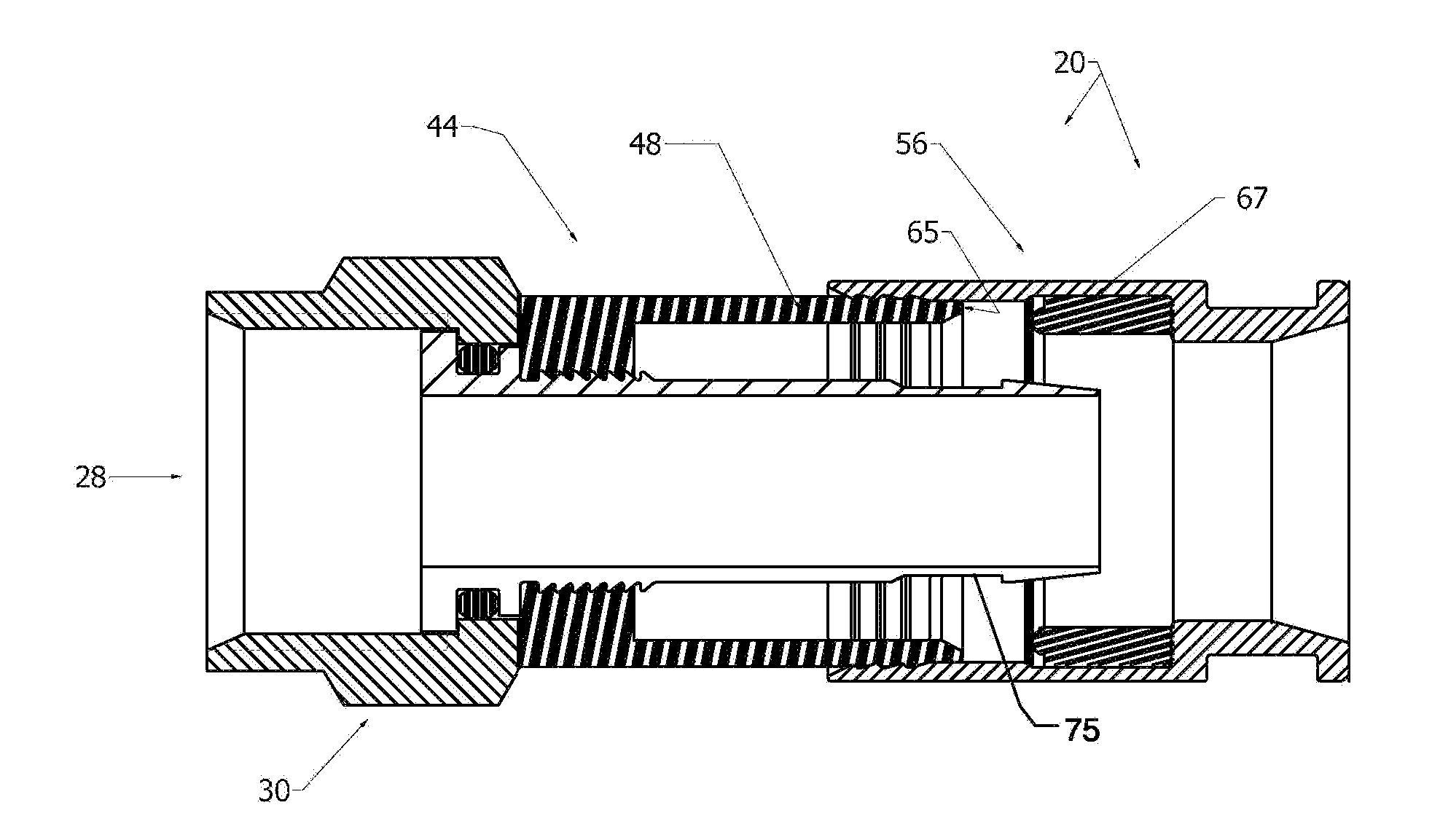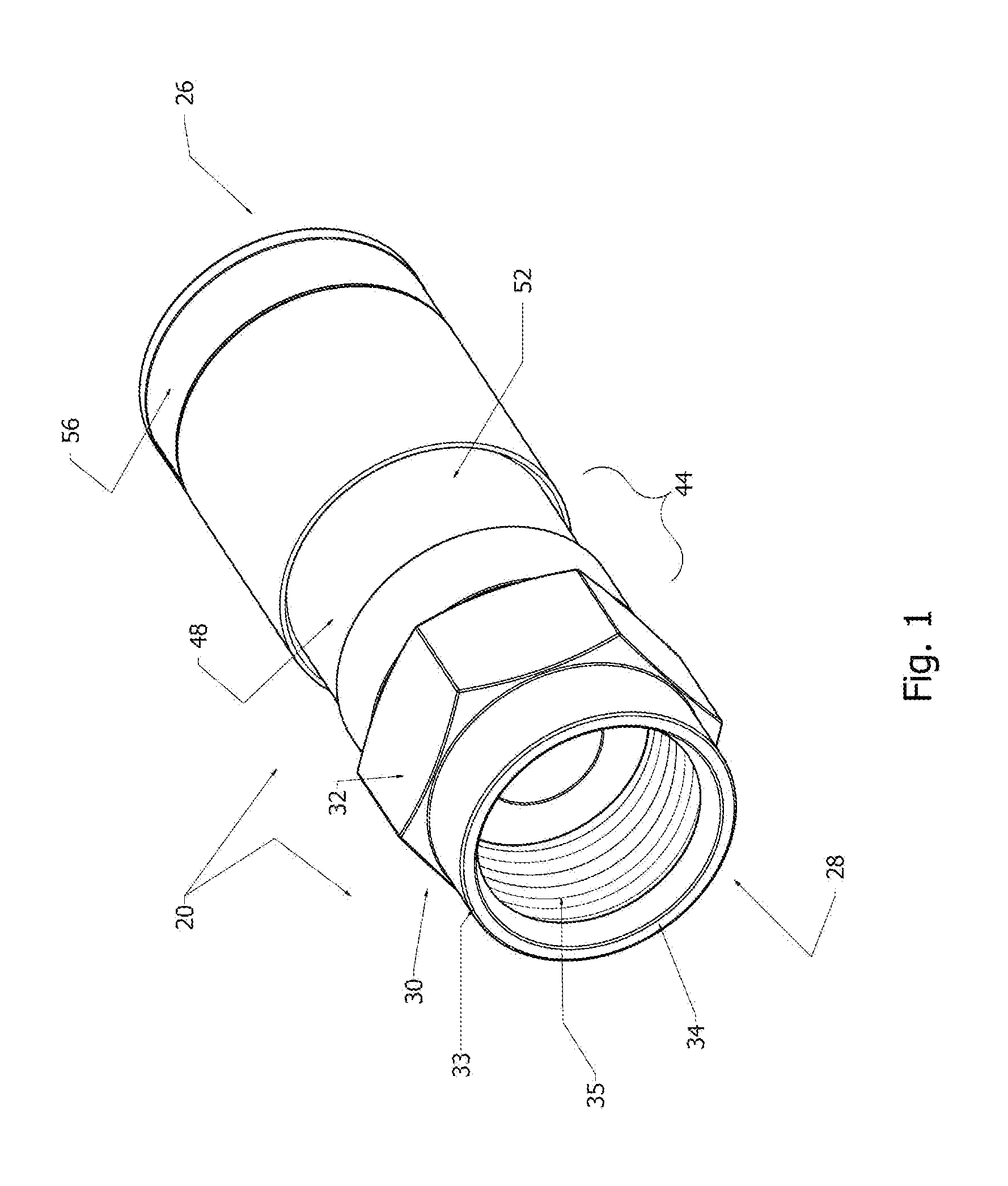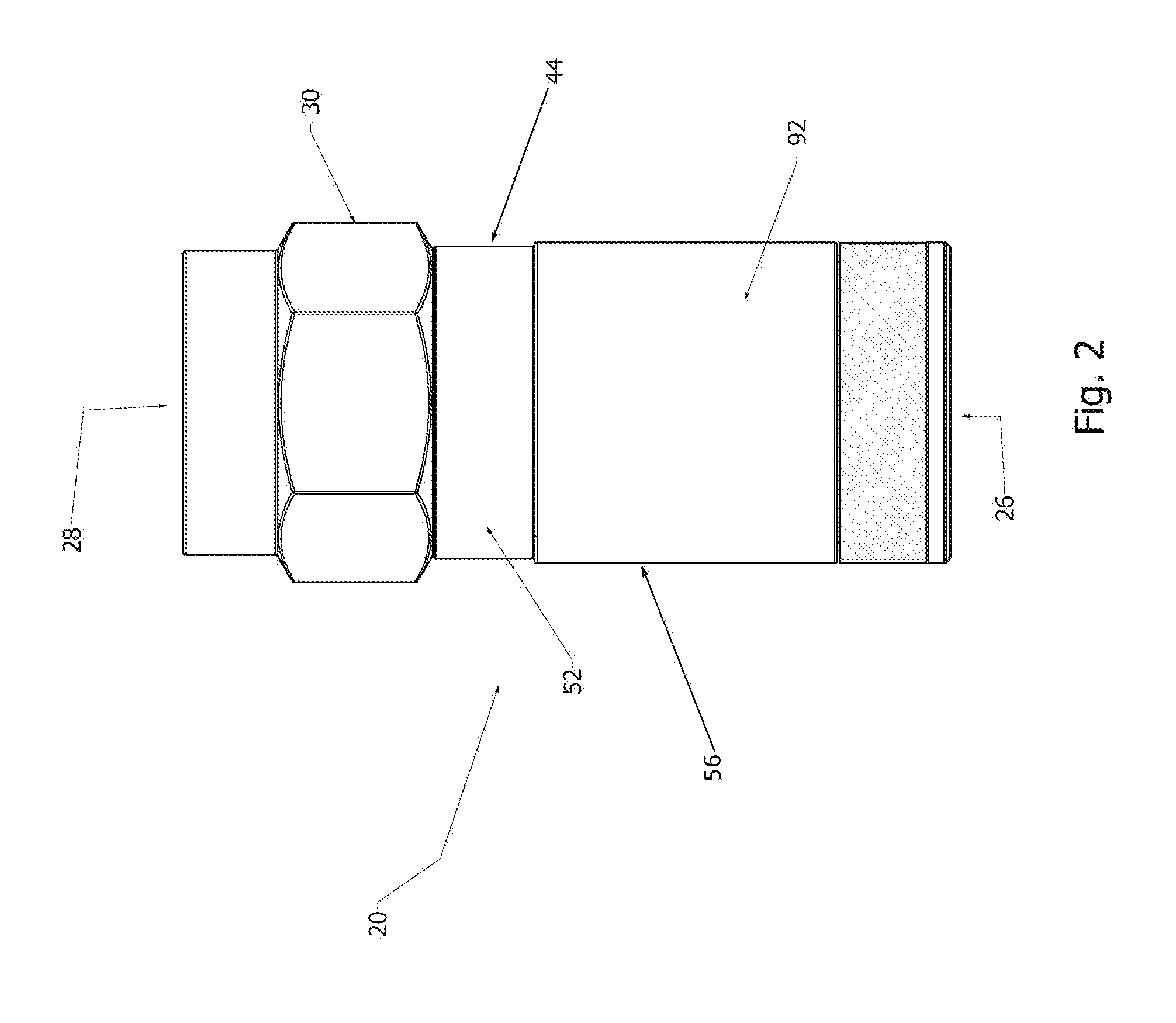Compression Type Coaxial F-Connector With Traveling Seal and Grooved Post
a coaxial f-connector and traveling seal technology, applied in the field of electric connectors, can solve the problems of degrading the signal pathway between the coax, the connector, and the fitting, and the high quality f-connector is subject to demanding standards and requirements, and achieves fast and reliable connection, reliable internal seal, and high operating bandwidth
- Summary
- Abstract
- Description
- Claims
- Application Information
AI Technical Summary
Benefits of technology
Problems solved by technology
Method used
Image
Examples
Embodiment Construction
[0082]For purposes of disclosure the entire disclosure within U.S. utility patent application entitled “Compression Type Coaxial Cable F-Connectors with Traveling Seal and Barbless Post,” filed Nov. 15, 2010, Ser. No. 12 / 927,424, and U.S. Pat. Nos. 7,841,896 and 7,513,795 are hereby incorporated by reference as if fully set forth herein.
[0083]With initial reference directed to FIGS. 1-5 of the appended drawings, an open F-connector for coaxial cable constructed generally in accordance with the preferred embodiment of the invention has been generally designated by the reference numeral 20. The same connector disposed in a closed position is designated 21 (i.e., FIGS. 6-8). Connectors 20 and 21 are adapted to terminate an end of properly prepared coaxial cable, the proper preparation of which is well recognized by installers and others with skill in the art. After a prepared end of coaxial cable is properly inserted through the open bottom end 26 (FIG. 1) of an open connector 20, the ...
PUM
 Login to View More
Login to View More Abstract
Description
Claims
Application Information
 Login to View More
Login to View More - R&D
- Intellectual Property
- Life Sciences
- Materials
- Tech Scout
- Unparalleled Data Quality
- Higher Quality Content
- 60% Fewer Hallucinations
Browse by: Latest US Patents, China's latest patents, Technical Efficacy Thesaurus, Application Domain, Technology Topic, Popular Technical Reports.
© 2025 PatSnap. All rights reserved.Legal|Privacy policy|Modern Slavery Act Transparency Statement|Sitemap|About US| Contact US: help@patsnap.com



